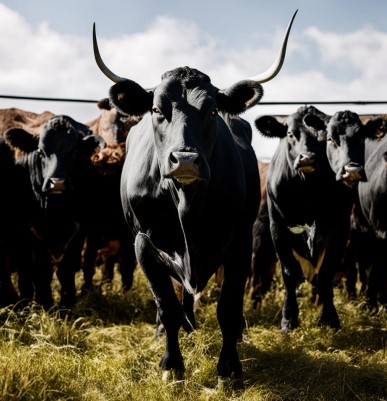Importing Mexican Cattle to the United States: New Challenges and Prospects

Parasite Situation Worsening
Last week, a case of the New World screwworm (Cochliomyia hominivorax) was reported in the Mexican state of Tabasco. This parasite poses a serious threat to the HEALTH of not only livestock, but also humans. The larvae of this worm, which feed on skin and soft tissue, can cause dangerous diseases such as wound or traumatic myiasis, which can sometimes be fatal. However, the USDA assures that current protocols for pre-clearance inspection and processing will ensure the safe movement of livestock and reduce the risk of spreading this parasite. Economic Impact Earlier this year , the prices of cattle and beef in the United States reached historic highs. This is due to a supply shortage, which was caused, among other things, by the closure of the southern border to imports of cattle from Mexico last November due to the screwworm threat. The lifting of the ban on cattle imports from Mexico was made possible by new animal health assessment protocols that were agreed upon between the two countries. Economists note that the restoration of imports can help stabilize MEAT prices and provide consumers with more affordable products. However, it is important to keep in mind that any cases of infection can cause new market unrest and lead to price changes. Safety Protocols In the face of the screwworm threat, the USDA has implemented a comprehensive approach to pre-inspection and treatment of cattle before they enter the country. These measures are aimed at minimizing risks and protecting both American cattle and public health. The program includes mandatory veterinary inspections and animal health monitoring, which should improve safety. Thus, the import of Mexican cattle into the United States will continue despite the new challenges posed by the parasite. The adopted safety measures will help minimize risks, and the restoration of imports can positively affect prices and the availability of beef for consumers. However, it is important to remain vigilant and monitor the situation to prevent possible outbreaks and protect both human and animal health .
Read together with it:
- The IEA sees a risk of a decline in oil production in Russia due to sanctions.The IEA sees a risk of reduced oil production in RUSSIA due to US sanctions , but maintains its production forecast. According to the IEA, Russian oil exports will remain unchanged.There is a "significant downside risk" to Russia's oil production forecast due to US sanctions, the International Energy Agency (IEA) said in a report.BLOOMBERG . The agency's experts believe that the latest US sanction...
- Министр сельского хозяйства предлагает долгосрочные контракты для стабилизации цен на продуктыЛут подчеркнула, что за последние десять лет рост цен на основные продукты в России не превысил общий уровень инфляции, а в некоторых категориях даже отстает от нее. Тем не менее, наблюдается устойчивый рост себестоимости продукции из-за увеличения цен на технику, энергоресурсы и логистику. Для контроля ценовой ситуации министерство сотрудничает с депутатами и рядом других ведомств. Также она упом...
- Низкое предложение и устойчивый спрос: в Аргентине растут цены на мясоЦены на говядину снова выросли, что отразилось на полках супермаркетов и в мясных магазинах. За последние две недели розничные цены выросли на 8–12%, а на некоторые популярные отрубы рост превысил 15% по сравнению с октябрем. Тем не менее, продажи остаются высокими: потребители продолжают покупать, принимая новые цены и закрепляя тенденцию, которая повторяется каждый год в конце года, когда спрос ...
- Колумбия: При экспорте скота сертификация и прослеживаемость больше не являются необязательнымиВысококачественное животноводство, особенно при экспорте, требует сертификации и прослеживаемости. Это необходимые условия для выхода и конкуренции на многих международных рынках, а также на некоторых всё более требовательных внутренних рынках. Колумбийское животноводство не является исключением из этих правил, и, хотя предстоит ещё многое сделать, всё большее число ферм и компаний внедряют эти ме...


